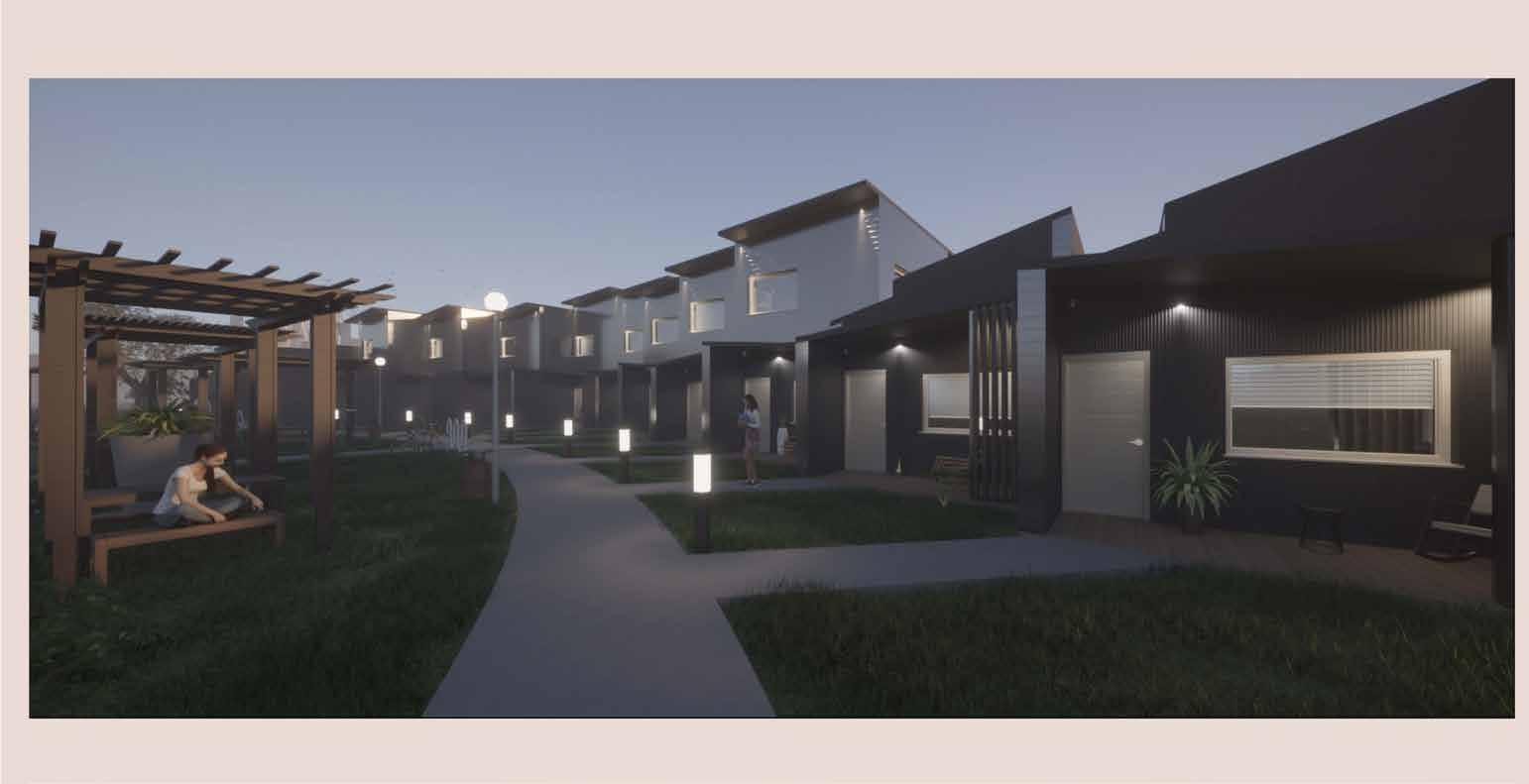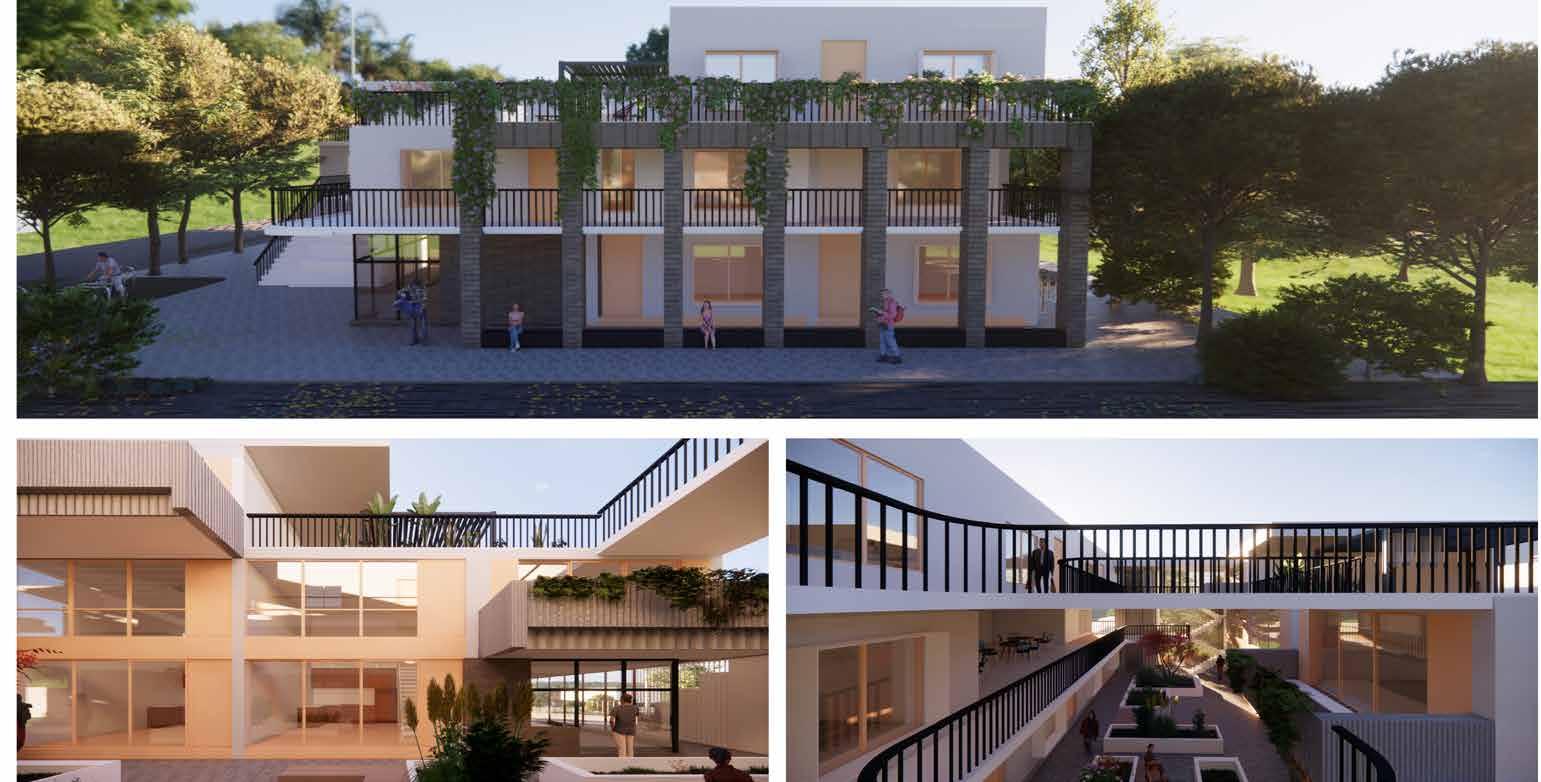
1 minute read
Western Sydney University Archvengers
Project Project XII
Submission Extract
Project XII aims to provide an innovative solution that will revolutionise residential building in New South Wales. The project focusses on amenity and adaptability for residents, affordable and fast design and construction, and community activation. This amenity is created through biophilic design and flexible floor planning, with natural elements and green spaces boosting residents’ health and wellbeing, providing natural light and maintaining a comfortable temperature. Joinery design and planning will ensure dwellings are adaptive to client needs and site conditions, while flexible floor plans, movable partitions and modular components enable easy reconfiguration to meet requirements. The modular design provides for fast approval, fabrication and assembly, and homes will be both affordable and sustainable. Project XII will minimise environmental impact and carbon cost through sustainable design principles, advanced energy efficiency technology, renewable energy, and other smart technologies. An intelligent and interactive environment is provided by Internet of Things (IoT) sensors, artificial intelligence (AI) and data analytics systems, which will facilitate automation, energy efficiency, and personalised user experiences. The building also fosters community engagement and social interaction through inclusive design features: shared spaces, communal facilities, and interactive platforms that promote collaboration, knowledge sharing, and a sense of belonging among residents.
Project Malvern East
Submission Extract
This proposal for Malvern East in Melbourne centres on the concept of a stacked neighbourhood that promotes wellbeing of the community through social interactions and connection with nature. Shared communal spaces include a laundry, communitygrown garden and deck, while the ground floor will become a public space for small shops and workshop areas in which the community can build connections. The project focusses on agile architecture, with each module prefabricated and connected by loose fit framing. A focus on sustainability is reflected by the implementation of passive house design principles and effective ventilation to achieve energy efficiency, and the incorporation of green communal services, water tanks and other renewable energy sources allow it to be economical in the long term. The two semi-connected buildings are oriented to the north, maximising sun while receiving the southern breeze, and a central area between the buildings will further foster a sense of community. This design allows for a healthy living environment, with the ground garden promoting natural wellbeing and the core stairs being punctuated by greenery as people walk up them. Generous double-storey living rooms on the ground floor provide residents with a sense of spaciousness.











